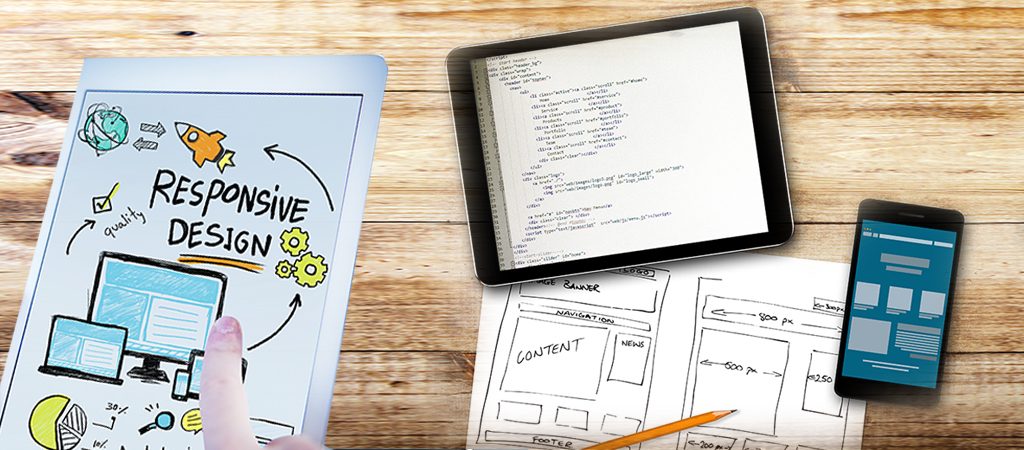As technology evolves, so do the strategies and techniques that web designers use to create seamless online experiences. Responsive web design (RWD) has become a fundamental approach to ensure websites function effectively across a variety of devices, from desktops to smartphones. As we step into 2024, several emerging trends are poised to shape the future of responsive web design. In this blog, we’ll explore these trends and discuss how they can enhance user experience and website performance.

Table of Contents
Toggle1. Mobile-First Design
With mobile devices accounting for over half of global web traffic, adopting a mobile-first design approach is becoming increasingly crucial. In 2024, we can expect to see:
- Prioritization of Mobile UX: Designers will focus on creating intuitive mobile experiences before scaling up to larger screens, ensuring that essential features and content are easily accessible on smaller devices.
- Simplified Navigation: Expect more hamburger menus, tabbed navigation, and vertical scrolling designs that cater to mobile users’ preferences for simplicity and ease of use.
Key Takeaway:
Mobile-first design will enhance usability and engagement, ensuring a seamless experience for users across all devices.
2. Fluid Layouts and Flexible Grids
As screen sizes continue to diversify, fluid layouts and flexible grid systems will gain traction. These approaches allow websites to adapt to any screen size without losing their design integrity. In 2024, look out for:
- CSS Grid and Flexbox: These CSS techniques will become standard tools in a designer’s toolkit, allowing for dynamic layouts that respond to various screen dimensions while maintaining visual harmony.
- Aspect Ratio Control: Designers will increasingly leverage aspect ratio CSS properties to ensure images, videos, and other elements maintain their intended dimensions across devices.
Key Takeaway:
Fluid layouts will facilitate smoother transitions between devices, enhancing the user experience across different platforms.
3. Dark Mode as a Standard Feature
Dark mode has gained immense popularity in recent years, and its integration into responsive web design is becoming a standard expectation. In 2024, we can anticipate:
- User-Centric Design Choices: Websites will incorporate dark mode options that allow users to toggle between light and dark themes, catering to user preferences and enhancing accessibility.
- Consistent Styling: Designers will need to ensure that both dark and light modes maintain consistent branding and usability, creating a cohesive experience regardless of the chosen theme.
Key Takeaway:
Embracing dark mode will not only improve aesthetics but also enhance user comfort, particularly in low-light environments.
4. Microinteractions and Animation
Microinteractions—small, subtle animations that enhance user experience—are becoming a critical element of modern web design. In 2024, look for:
- Enhanced Engagement: Microinteractions will be used to provide feedback on user actions, such as hovering over buttons or submitting forms, making the experience more interactive and enjoyable.
- Loading Animations: As websites continue to prioritize performance, animated loaders will keep users engaged while content is being fetched, reducing perceived wait times.
Key Takeaway:
Incorporating microinteractions will enhance user engagement and make websites feel more dynamic and responsive.
5. Voice User Interface (VUI)
With the rise of voice-activated devices and virtual assistants, voice user interface (VUI) is becoming a significant trend in web design. In 2024, we can expect to see:
- Voice Search Optimization: Designers will need to optimize websites for voice search, focusing on natural language processing and keyword strategies that cater to voice queries.
- Voice-Activated Navigation: Websites may incorporate voice commands to navigate, search, and interact, providing a hands-free experience for users.
Key Takeaway:
Integrating VUI into responsive design will make websites more accessible and user-friendly, particularly for those who prefer voice interaction.
6. Emphasis on Accessibility
Accessibility remains a vital consideration in web design, and in 2024, we can expect increased focus on creating inclusive digital experiences. Key trends include:
- Compliance with Accessibility Standards: Designers will prioritize adhering to standards such as the Web Content Accessibility Guidelines (WCAG) to ensure websites are usable for individuals with disabilities.
- Inclusive Design Practices: Websites will incorporate features such as adjustable text sizes, high-contrast modes, and keyboard navigation to cater to a diverse audience.
Key Takeaway:
Focusing on accessibility will not only improve usability for individuals with disabilities but also enhance overall user experience and reach.
7. Integration of Augmented Reality (AR)
As AR technology continues to advance, its integration into web design is becoming more feasible and practical. In 2024, we can anticipate:
- Enhanced Product Visualization: E-commerce websites may incorporate AR to allow users to visualize products in their real-world environment, enhancing the shopping experience.
- Interactive Learning Experiences: Educational websites may utilize AR to create immersive learning experiences, making content more engaging and interactive.
Key Takeaway:
AR integration will provide innovative ways for users to interact with content, transforming traditional web experiences into dynamic, engaging platforms.
8. Performance Optimization
Website performance is crucial for user retention and SEO rankings. In 2024, designers will continue to prioritize performance optimization through:
- Image Optimization: Using modern formats like WebP and AVIF to reduce file sizes without compromising quality will become standard practice.
- Lazy Loading Techniques: Implementing lazy loading will enhance page load times by deferring the loading of off-screen images and content until the user scrolls down.
Key Takeaway:
Performance optimization will improve user experience, reduce bounce rates, and enhance SEO, making it a critical focus for web designers.
Conclusion
As we look ahead to 2024, the future of responsive web design is set to be defined by trends that prioritize user experience, accessibility, and innovative technologies. By embracing mobile-first design, fluid layouts, dark mode, microinteractions, voice user interfaces, and performance optimization, web designers can create engaging and functional websites that cater to the diverse needs of users. Staying informed about these trends will be essential for website owners and designers aiming to maintain a competitive edge in the digital landscape. As technology continues to evolve, so too will the strategies that shape responsive web design, making it an exciting time for the industry.


No responses yet